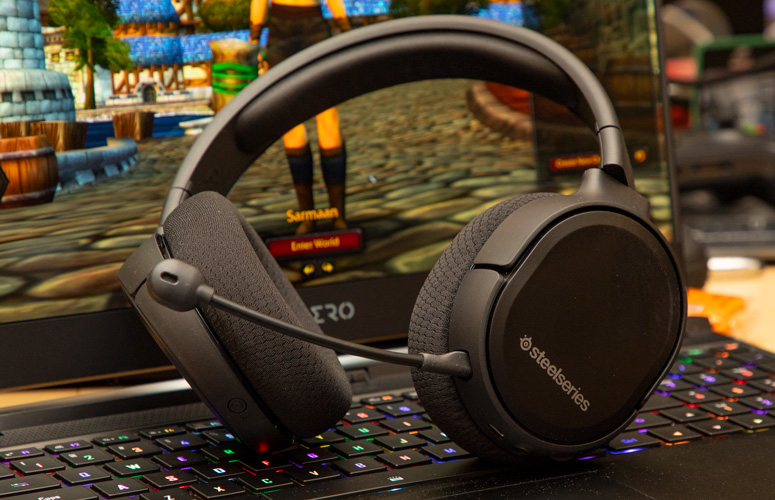Tom's Guide Verdict
Pick up the SteelSeries Arctis 1 if you want a simple wireless headset for the Switch — and every other system you own. Steer clear if you need a model with extremely high-end sound, though.
Pros
- +
Excellent wireless connectivity
- +
Compatibility with almost everything
- +
Decent sound for gaming and music
- +
Comfortable fit
Cons
- -
No elastic headband
- -
No iOS compatibility
Why you can trust Tom's Guide
I have a pet theory that you can trace a lot of audio confusion in the tech world back to Apple's removal of the headphone jack in the iPhone 7. Whereas before we had one universal standard, now there are 3.5-mm headphones, Bluetooth headphones, wired USB headphones, wireless USB headphones — the list goes on. It's gotten to the point where a gamer might need three different headsets in their backpack, plus two more at home, to fully leverage each system's sound quality.
But with the increasing prevalence of the USB-C standard, there may be a panacea on the horizon. Enter the SteelSeries Arctis 1 Wireless ($100) gaming headset, which makes switching between systems quick and relatively painless. Thanks to a widely compatible USB-C adapter and a few handy extra wires, you can use the Arctis 1 Wireless, untethered, with your PC, PS4 and mobile phone — and, notably, the Nintendo Switch. This is all without the cumbersome pairing procedures and long load times of competing Bluetooth dongles.
- The best wireless gaming headsets right now
- Our picks of the best headsets for Xbox Series X
Controlling volume across five different systems can get a little wonky, the sound quality has a budget feel to it and the design isn't nearly as comfortable as the higher-end Arctis models. But when it comes to compatibility, portability and price, you simply can't beat the Arctis 1 Wireless.
Design
If you've had a chance to check out the Arctis 1's wired configuration, you'll be familiar with the Arctis 1 Wireless because it's almost exactly the same. The headset has a plain, black-plastic chassis, with plush, foam ear cups and an expandable steel headband rather than the "ski goggles" elastic headband from more expensive Arctis models. This is one of the device's biggest pitfalls, but I'll discuss it more in the next section.
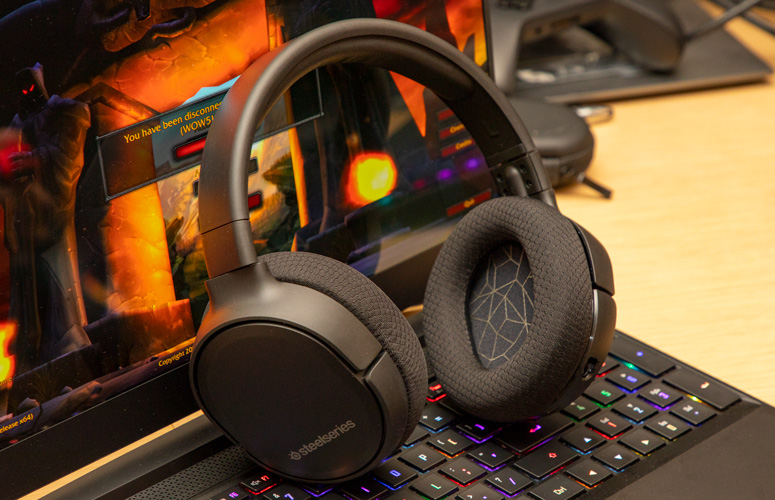
One big improvement over the wired model is that the Arctis 1 Wireless has swiveling ear cups. This not only helps you get a more comfortable fit but also makes it easier for the headset to fold flat in a backpack. That's a good thing, since it plays nicely with every portable system you're likely to own.
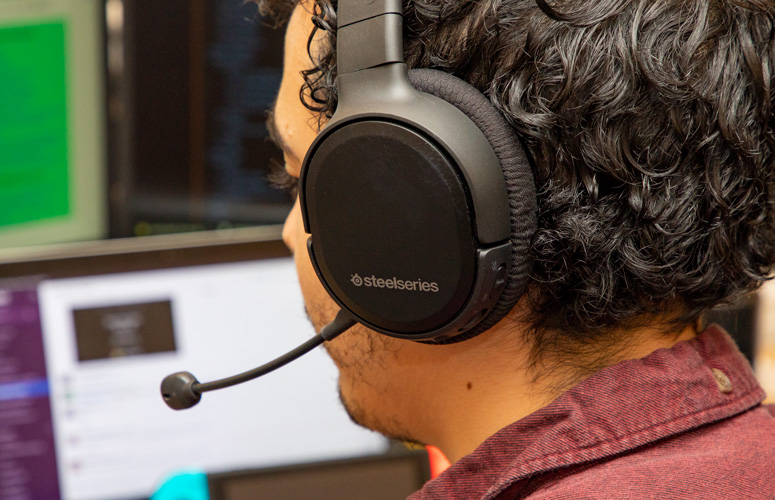
Unlike most wireless headsets, which connect via Bluetooth or USB-A dongles, the Arctis 1 Wireless employs a small USB-C dongle, which seems ideally shaped for the Switch's bottom port. It will, indeed, work with PCs, mobile phones or any other USB-C device you have handy.
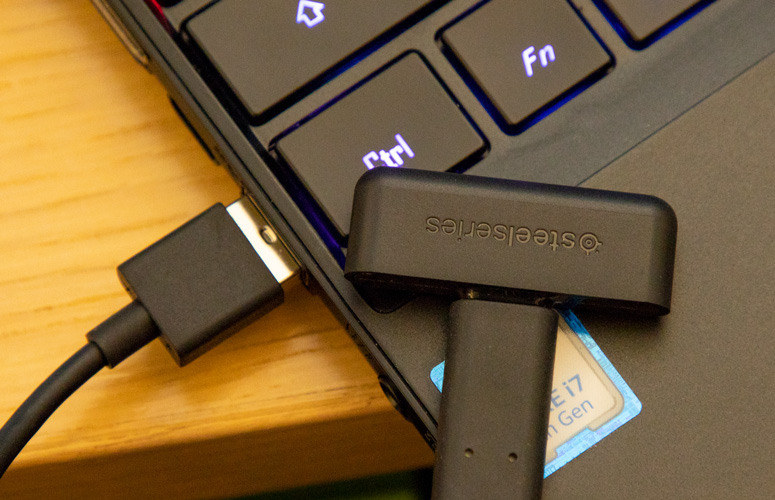
However, you can connect the headset wirelessly to a PC, PS4 or Switch in docked mode nearly effortlessly, thanks to a USB-C-to-A adapter cable that comes in the box. Admittedly, it's not very pretty to sling a wire haphazardly across all of your meticulously maintained machines. It can also be a pain to constantly transfer a whole wire from a PC, to a PS4, to a Switch dock and back again, perhaps multiple times per day. But you do get almost universal compatibility, and enough slack in the wire to find a convenient position.
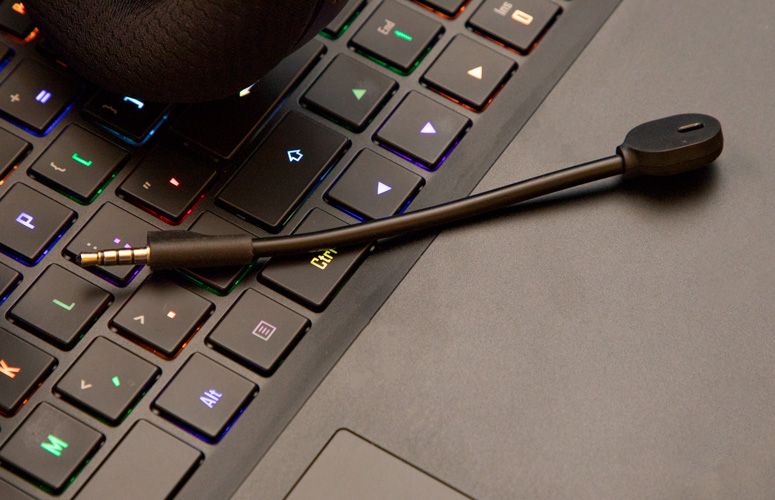
The Arctis 1 Wireless also comes with a 3.5-mm audio cable, so you can connect it to phones with headphone jacks, older portable consoles and the Xbox One. It's not nearly as seamless an experience as simply using the wireless connections, but this headset will technically work with every game system you own, which is impressive in its own right.
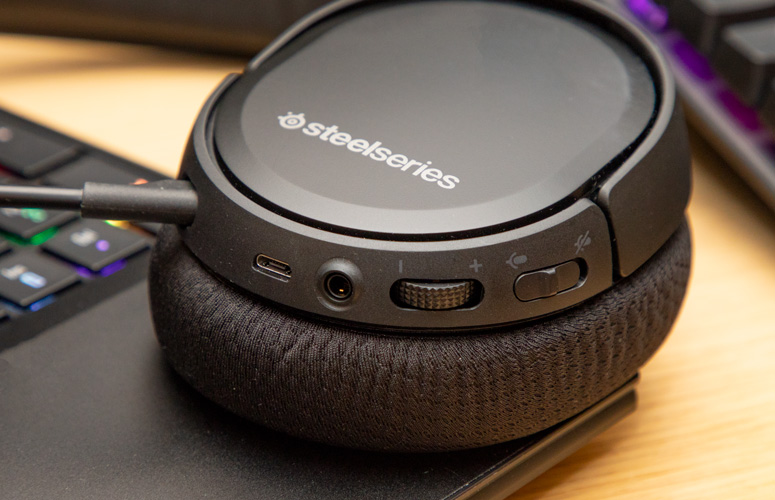
Beyond that, the left ear cup is a bit crowded, with a mic-mute button, a volume dial, a 3.5-mm jack, a micro-USB charging port and a port for the removable microphone. The right ear cup, on the other hand, hosts only the power button. It makes the device feel a little imbalanced, although I understand that it's generally easier to bunch electronic controls together.
Comfort
The Arctis 1 is a lightweight headset (9.6 ounces), and the Arctis 1 Wireless is even lighter (8.9 ounces). It's easy to wear for long periods of time, especially since there's no pesky wire to get in the way. The swiveling ear cups make it a little easier to get a good fit. However, I'm still not an enormous fan of the "steel headband with notches" design. The elastic band on higher-end Arctis headsets is about as comfortable as headset tech gets, and anything else can't help but feel like a step back.
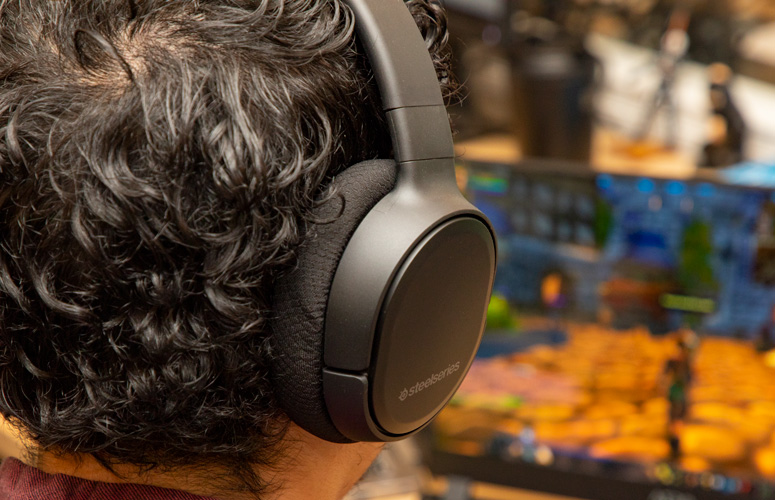
I handed off the Arctis 1 Wireless to a co-worker, who was also extremely impressed with the lightweight design and comfortable ear cups. However, he, too, was not thrilled with the steel-notched headband, with which he also struggled to find a good fit.
Gaming performance
I tested the Arctis 1 Wireless with just about every modern gaming system: a Switch (in portable and docked modes), a PS4, a PC, an Xbox One and an Android phone. (The Arctis 1 Wireless, unfortunately, is not compatible with newer iPhones, even if you have a Lightning-to-USB-C adapter.) I was extremely pleased with the Arctis 1 Wireless' performance across the board.
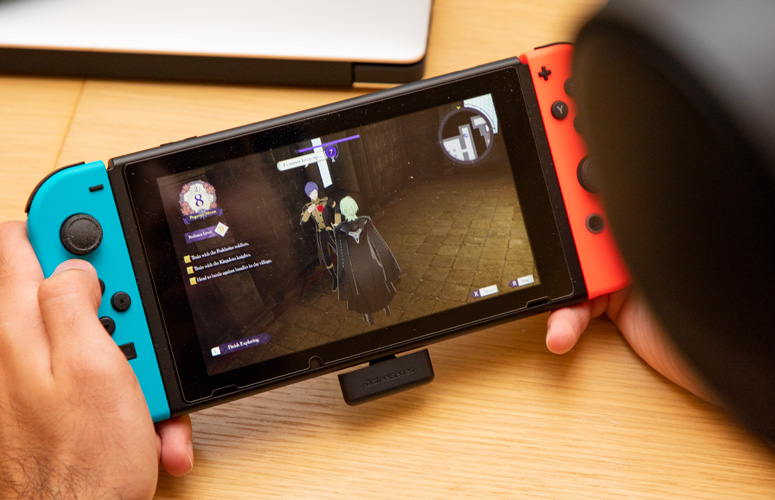
I was extremely pleased with the Arctis 1's performance across the board.
The headset was loud enough for me to hear Dragon Quest V on Android and Final Fantasy VII on the Switch, even in the noisy NYC subway. It was crisp enough to follow along with the dialogue in Assassin's Creed Origins on PS4. It was precise enough to balance the dialogue, sound effects and orchestral music in Age of Mythology: Extended Edition on PC. It even worked with Donut County on the Xbox One, although it was a little hard to find the right volume balance through the 3.5-mm cord.
It's important to remember that the Arctis 1 is, fundamentally, a budget headset. As such, games sound clear and intelligible, rather than vibrant and nuanced. This is not an audiophile headset, or a headset for hard-core competitive players, for whom every footstep could mean life or death. But for everyday use, it sounds just fine.
Features
The most important feature of the Arctis 1 Wireless is its USB-C dongle. SteelSeries claims that this dongle will eliminate a lot of the pain points traditionally associated with wireless Switch headphones, particularly since they often require cumbersome Bluetooth dongles. As such, I tried switching between all the game systems in my home, using only the USB-C dongle (and the USB-A adapter), timing how long it took before the sound started up in each case.
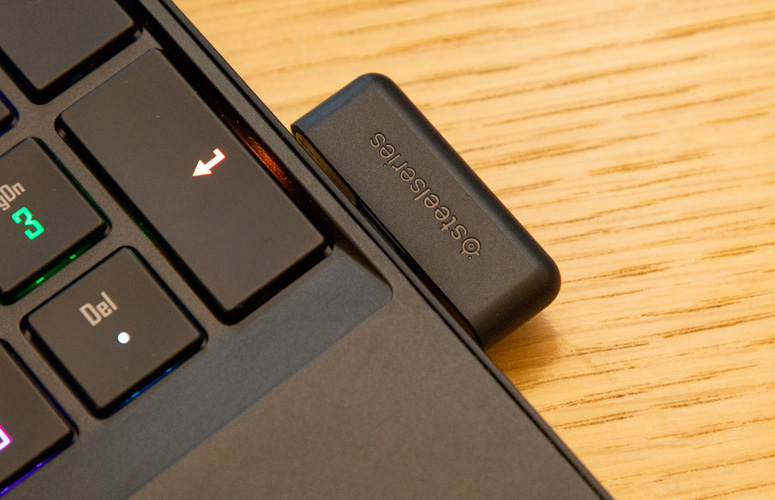
The results were extremely impressive. I started with the dongle in my PC and then transferred it to my Switch in handheld mode. It took 7 seconds for the sound to kick in, and that wound up being the longest I had to wait. From there, I transferred the adapter to my Android phone, then to my Switch in docked mode, then to my PS4. Each time, the sound took 5 seconds to kick in. This is a big difference from Bluetooth devices, which can often take 30 or 40 seconds — or even longer, if you're just pairing them for the first time.
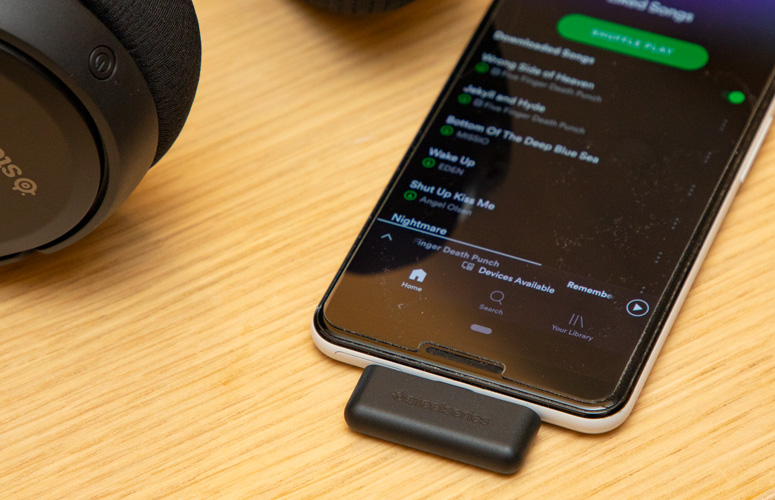
It took 7 seconds for the sound to kick in when I switched from PC to Switch — and that was the longest I had to wait.
The sound quality was also consistent and stable, without any kind of lag or dropped signals. I placed my phone in the center of my apartment and then walked to every corner, in every room, to see how well I could hear my music. No matter where I ventured, I didn't lose any signal. I would estimate that the signal holds up for about 30 feet, but since you'll likely be within 10 feet (or 2 feet, for handhelds) of your sound source at all times, it's not all that important.
MORE: Best Gaming Headsets 2019
You can also tweak a variety of options with the SteelSeries Engine 3 software, including equalization, mic sidetone and time until the device powers off. It's pretty straightforward, and it's handy that your equalization options carry over to other systems. (The changes you make on a PC will still work on a Switch, in other words.) You can also monitor the headset's battery life, which is about 20 hours.
The microphone continues to be something of a mixed bag. It recorded my voice extremely clearly, with very little fuzziness or distortion. However, it also picked up nearby sounds indiscriminately, making it a tough sell for a crowded office or a noisy living room. It's fine for casual multiplayer, but you may have to repeat yourself a few times if you're competing with a spouse, roommate or kids in the same living space.
Music performance
Budget headsets often fall down when it comes to music, but the Arctis 1 Wireless does a respectable job. Songs from Old Crow Medicine Show, Flogging Molly, The Rolling Stones and G.F. Handel all came through loud and clear, whether I was stuck underground on the subway or hanging out on my couch at home. There's not much bass, but it's not a bad headset for everyday work and play.
One thing I especially like about the Arctis 1 Wireless is that it's very unobtrusive, even to wear out and about. Thanks to the headset's removable mic, I could ride the subway and look like any other commuter. Furthermore, because the headset doesn't have noise cancellation, it was easy to pay attention to my surroundings while listening to music or playing a game.
Bottom line
The Arctis 1 Wireless accomplishes exactly what it sets out to do, in a way that's just as simple as promised. The results aren't always pretty; there's a lot of shuffling around adapters and wires. But the process is dead simple, and the sound quality is always pretty good. It's the easiest way to get wireless sound on the Switch, hands down, and the fact that it works with almost every other system out there is just icing on the cake.
In spite of a few quibbles about the headband and the wildly varying volume levels between systems, the Arctis 1 Wireless is a fantastic peripheral. Now, let's hope SteelSeries applies the same idea to a headset with an elastic headband.
Marshall Honorof is a senior editor for Tom's Guide, overseeing the site's coverage of gaming hardware and software. He comes from a science writing background, having studied paleomammalogy, biological anthropology, and the history of science and technology. After hours, you can find him practicing taekwondo or doing deep dives on classic sci-fi.
